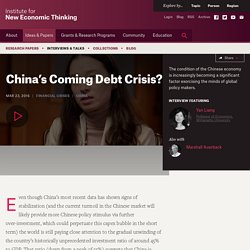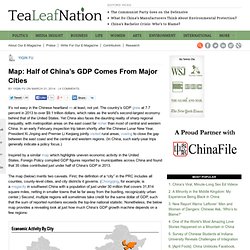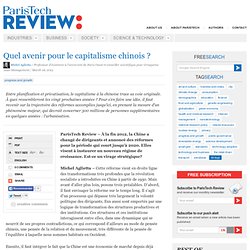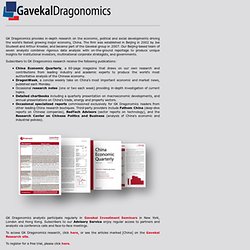

Les points de rencontre de l'Asie avec les grands enjeux globaux. China’s Coming Debt Crisis? Even though China’s most recent data has shown signs of stabilization (and the current turmoil in the Chinese market will likely provide more Chinese policy stimulus via further over-investment, which could perpetuate this capex bubble in the short term) the world is still paying close attention to the gradual unwinding of the country’s historically unprecedented investment ratio of around 45% to GDP.

That ratio (down from a peak of 55%) suggests that China is poised to embark on a powerful accelerator-multiplier dynamic to the downside. Add to that ongoing dollar strength, which has inflicted further deflationary pressures on resource producers, most particularly those who have borrowed dollars against declining resource revenues, all of which has put pressure on commodity prices.
Is this the domino that can bring down the global economy? What is the nature of the debt? How much is private? So what are the numbers? Mercator Institute for China Studies. Briefings. China Vitae. Map: Half of China's GDP Comes From Major Cities. It’s not easy in the Chinese heartland — at least, not yet.

The country’s GDP grew at 7.7 percent in 2013 to over $9.1 trillion dollars, which rates as the world’s second-largest economy behind that of the United States. Yet China also faces the daunting reality of sharp regional inequality, with metropolitan areas on the east coast far richer than most of central and western China. In an early February inspection trip taken shortly after the Chinese Lunar New Year, President Xi Jinping and Premier Li Keqiang jointly visited rural areas, vowing to close the gap between the east coast and the central and western regions. (In China, such early-year trips generally indicate a policy focus.) Inspired by a similar map which highlights uneven economic activity in the United States, Foreign Policy compiled GDP figures reported by municipalities across China and found that 35 cities contributed just under half of China’s GDP in 2013.
The map (below) merits two caveats. Yiqin Fu. China Real Time Report. ResearchInChina. Charles-Edouard Bouée – Blog Chine / Management. Quel avenir pour le capitalisme chinois ? ParisTech Review – À la fin 2012, la Chine a changé de dirigeants et annoncé des réformes pour la période qui court jusqu’à 2020.

Elles visent à instaurer un nouveau régime de croissance. Est-ce un virage stratégique? Michel Aglietta – Cette réforme vient en droite ligne des transformations très profondes que la révolution socialiste a introduites en Chine à partir de 1950. Mais avant d’aller plus loin, posons trois préalables.
D’abord, il faut envisager la réforme sur le temps long. Ensuite, il faut intégrer le fait que la Chine est une économie de marché depuis déjà longtemps, ce qui prouve au passage que capitalisme et économie de marché ne sont pas la même chose, comme l’a bien décrit Fernand Braudel. Enfin, il faut se rappeler d’où revient le pays. Analysys International. America, Inc.: Bearings, Drivelines, etc.
Dragonomics - Comprehensive macro research on China. GK Dragonomics provides in-depth research on the economic, political and social developments driving the world's fastest growing major economy, China.

The firm was established in Beijing in 2002 by Joe Studwell and Arthur Kroeber, and became part of the Gavekal group in 2007. Our Beijing-based team of seven analysts combines rigorous data analysis with on-the-ground reportage to produce unique insights for institutional investors, multinational corporate strategists, and governments. Subscribers to GK Dragonomics research receive the following publications: China Economic Quarterly, a 60-page magazine that draws on our own research and contributions from leading industry and academic experts to produce the world's most authoritative analysis of the Chinese economy. DragonWeek, a concise weekly take on China's most important economic and market news, published each Monday. Occasional research notes (one or two each week) providing in-depth investigation of current topics.
Palmarès des 500 meilleures entreprises chinoises : 15 entreprises privées au club des Cent milliards de yuans de chiffres d'affaires. La Confédération des entreprises chinoises (CEC) et l'Association chinoise des chefs d'entreprises (CEDA) ont conjointement rendu public le 1er septembre le Palmarès 2012 des 500 meilleures entreprises chinoises.

Avec Sinopec en tête pour la huitième année consécutive, China National Petroleum, State Grid, ICBC, la Banque de construction de Chine, China Mobile, la Banque agricole de Chine, la Banque de Chine, CSCEC et CNOOC occupent les douze premiers rangs du palmarès. Par rapport au palmarès 2011, le classement des 10 premières entreprises a passablement changé au-delà des quatre premiers rangs. Centre d'Informations Internet de Chine.
Informations et actualité de la Chine - QuestionChine.net. La Chine, « siphon » de l'économie mondiale. Lettre de Chine. Chine Informations. Find Industry reports, Company profiles and Market Statistics.